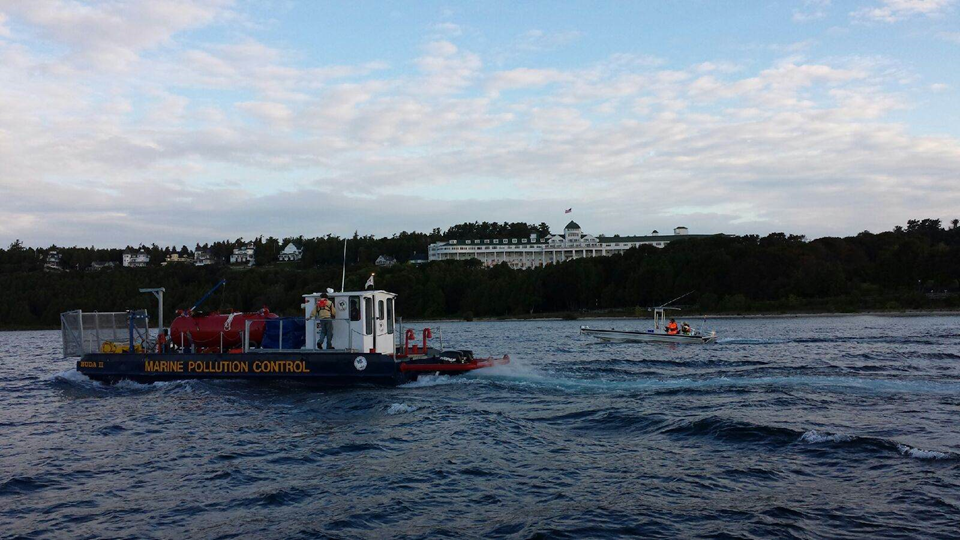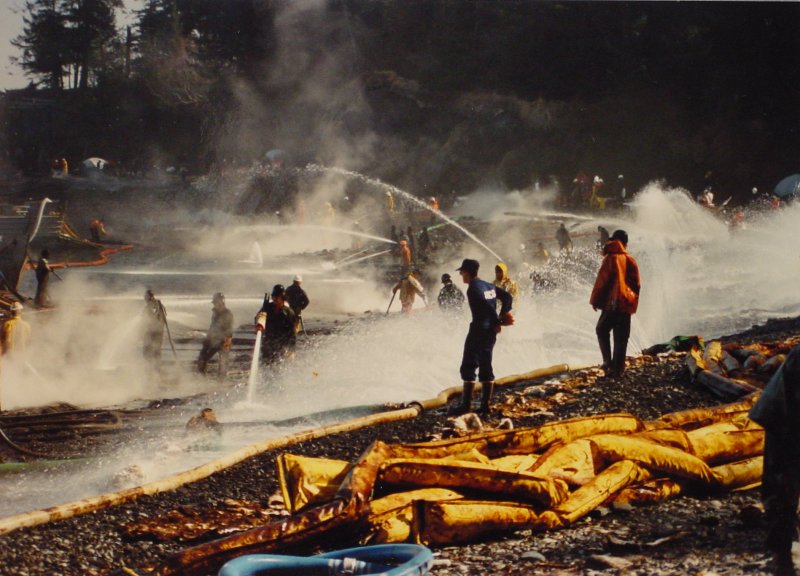
Great Lakes Moment is a monthly column written by Great Lakes Now Contributor John Hartig. Publishing the author’s views and assertions does not represent endorsement by Great Lakes Now or Detroit Public Television.
Detroit is well known as the automobile capital of the United States, the Arsenal of Democracy, the home of Motown and techno music, world-class architecture and building the middle class. But far less known is that Detroit is home to one of the leading environmental cleanup services companies in the world.
Marine Pollution Control was founded in Detroit in 1967 as the first oil spill cleanup company in the Great Lakes and one of the very first in the nation.
The oil pollution of the Rouge and Detroit rivers was not well-known in the ‘60s – during that time, the U.S. Department of Health, Education, and Welfare reported that Ford Motor Company’s Rouge Plant was discharging over 900 gallons of oil per day into the Rouge River.
It only takes one gallon of oil to pollute a million gallons of water.
In 1967, this substantial oil pollution caused the death of 5,700 ducks and geese in both the Rouge and Detroit rivers.
Also, in August 1967 Ford Motor Company spilled about 20,000 gallons of waste oil into the Rouge River. Uncertain about what to do, Ford personnel met with David Usher who, at the time, headed up Usher Oil Service, which was hauling waste oil from industrial sites. Asked if he could clean it up, Usher said yes without hesitation.
At the time, Usher did not have a good idea of how it could be done or what it would entail, but he bought some vacuum trucks and other equipment to siphon off the oil floating on the Rouge River.
That is how Marine Pollution Control started under the helm of Usher, a Detroit native, who remains the company’s chairman. The company is now run by Charles “Charlie” Usher, who serves as its president.
Over the years, Marine Pollution Control has played important roles in many of modern history’s most serious pollution incidents. For example, Marine Pollution Control assisted in the second largest oil spill in U.S. waters in history – the 1989 Exxon Valdez oil spill.
The oil tanker Exxon Valdez hit a reef, spilling 11 million gallons of crude oil into Prince Edward Sound.
“I would have to say that the Exxon Valdez was the most challenging emergency response project in our company’s history,” Charlie Usher noted about the spill.

Cleanup of the Exxon Valdez Oil Spill, taken March 1989 from Smith Island off Valdez, Alaska. (Photo Credit: Jim Brickett via Flickr, CC BY-ND 2.0)
In addition to lightering 40 million gallons of heavy crude oil from the tanker –which refers to removing oil and other hazardous chemicals from a compromised vessel – Marine Pollution Control also participated in the on-water spill response for over six months.
“The whole thing was a logistically and technically complex but successful project for the company,” Charlie Usher said.
In 1991, David Usher was asked by then President George H.W. Bush to help guide the cleanup of oil released from sabotaged wells in the Persian Gulf during Desert Storm. Other major projects included responding to Hurricane Katrina in 2005 –the costliest natural disaster in U.S. history – and the Enbridge oil spill in 2010 in which a 30-inch pipeline belonging to Enbridge, Inc. ruptured near Marshall, Michigan, and contaminated Talmadge Creek and the Kalamazoo River with hundreds of thousands of gallons of crude oil. Marine Pollution Control assisted with the recovery of over 1.2 million gallons of oil from the river between 2010 and 2014.
Marine Pollution Control is recognized as a true pioneer in the spill cleanup industry. However, it has also helped launch key industry trade associations, including the Spill Control Association of America, the International Spill Control Organization, and the American Salvage Association.
Today, Marine Pollution Control is still headquartered on the banks of the lower Rouge River in southwest Detroit, with branch offices in Holland, Mackinac City, and St. Ignace, Michigan. Their offices in Mackinac City and St. Ignace patrol the waters of the St. Marys River using fast boats and sophisticated remote sensing technologies to monitor all vessel traffic passing through the Straits of Mackinac and over Enbridge’s Line 5 pipelines. The goal is to prevent another possible vessel anchor strike of the lines as happened in July 2019.
Marine Pollution Control also has special pump systems for emergency offloading of liquid cargoes from vessels in peril, located at 17 U.S. locations and ports, as well as one each in Hong Kong, Singapore and the Netherlands.

(Image courtesy of Marine Pollution Control)
Marine Pollution Control is now expanding into another line of work developed out of their Holland office – cleaning wind towers of various environmental issues from mold contamination of the tower interiors to spills of hydraulic fluids and turbine grease.
“One of the challenges facing Marine Pollution Control is finding and retaining dedicated individuals who are willing to answer the call 24/7 to respond to environmental emergencies, as well as scheduled environmental remediation services,” said Charlie Usher.
“We are extremely proud of our history and that fact we remain one of the leading environmental services companies in the world,” Usher added.
He noted the company motto of “Get to know us before all Hell breaks loose.”
Initially, Marine Pollution Control was conceived as a highly mobile, rapid-response organization, but they have evolved from the early years of oil pollution cleanup into a fully equipped and experienced company providing effective solutions to their clients’ waste management, pollution prevention and spill response requirements.
Indeed, the waters of the Great Lakes and the world are a little cleaner because of the more than 50 years of work by Marine Pollution Control.
John Hartig is a board member at the Detroit Riverfront Conservancy. He serves as the Great Lakes Science-Policy Advisor for the International Association for Great Lakes Research and has written numerous books and publications on the environment and the Great Lakes. Hartig also helped create the Detroit River International Wildlife Refuge, where he worked as the refuge manager until his retirement.
Read more Great Lakes Moments on Great Lakes Now:
Great Lakes Moment: Beavers come knocking at the Detroit River’s former Black Lagoon
Great Lakes Moment: It’s a UFO. No, the aurora borealis. No, it’s Leamington greenhouses!
Great Lakes Moment: A new vision for the former McLouth Steel site in Trenton
Great Lakes Moment: Sacred land of the Wyandot of Anderdon Nation
Roller Coaster: Michigan’s long history with environmental contamination
Featured image: Marine Pollution Control works to prevent another possible vessel anchor strike of the Enbridge Line 5 pipelines crossing the Straits of Mackinac, 2020. (Photo courtesy of Marine Pollution Control)




